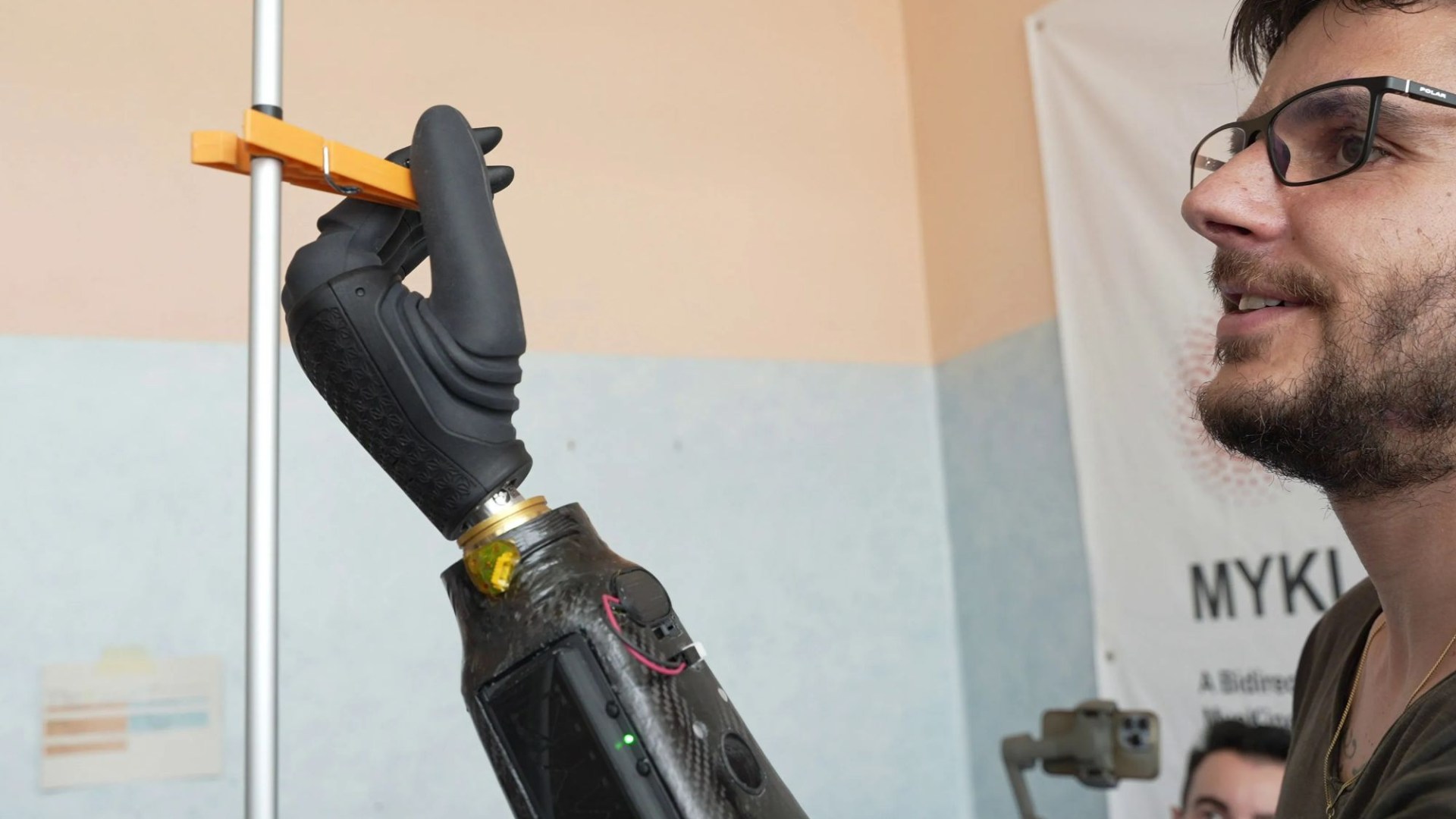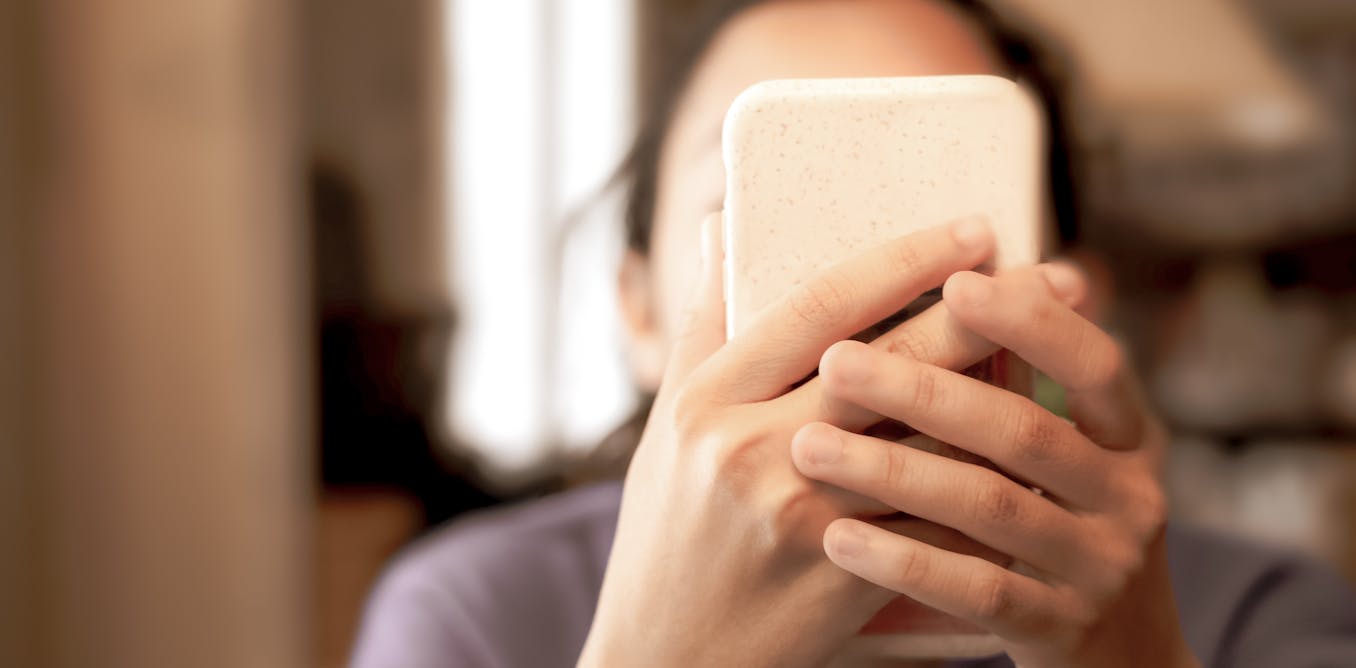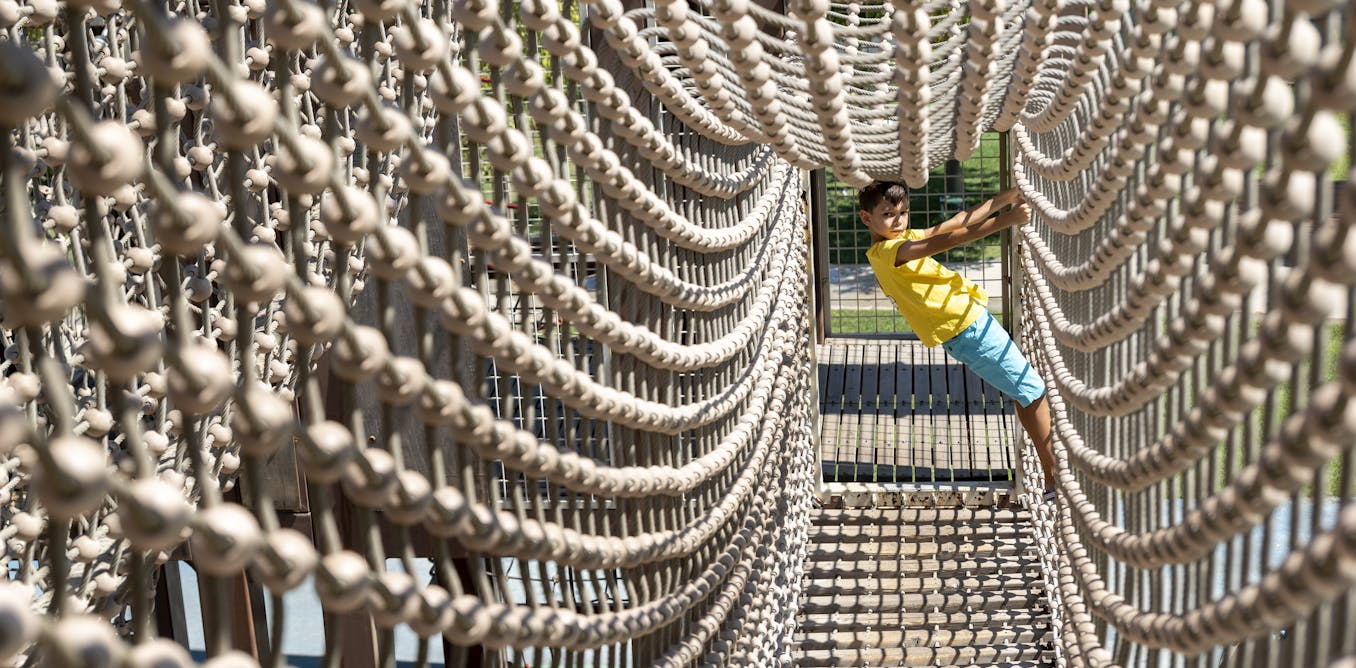A CLIP shows how the first-of-its-kind prosthetic hand allows amputees to move by simply thinking.
The prosthetic responds to the wearer’s brain’s signals, allowing them to control the force applied when grasping fragile objects.
3

3
“It feels like I’m moving my own hand,” said Daniel, the first patient to test the new prosthesis after losing his left hand.
It enables the amputee to conduct everyday activities such as opening a jar, using a screwdriver, or picking up a coin.
The magnetic-controlled hand was developed by Italian scientists at the BioRobotics Institute of the Sant’Anna School of Advanced Studies in Pisa.
They say it is a “completely new way” of controlling the movements of a robotic hand.
Professor Christian Cipriani said: “The trial on the first patient was successful.
“We are ready to extend these results to a broader range of amputations.”
He explained that the new prosthetic involves no wires, and no electrical connection, using only magnets and muscles to control the movements of the fingers.
The system involves implanting small magnets into the muscles of the forearm.
The implant, integrated with the Mia-Hand robotic hand developed by the spin-off Prensilia, was successfully tested on the first patient, a 34-year-old Italian named Daniel, who used the prosthesis for six weeks.
The trial, described in the journal Science Robotics, has been hailed as a “significant step forward” for the future of prostheses.
Prof Christian said: “This result rewards a decades-long research path.
“We have finally developed a functional prosthesis that meets the needs of a person who has lost a hand.”
He explained that the team explored “myokinetic control” – the decoding of motor intentions by means of implantable magnets in the muscles.
The idea behind the new interface is to use small magnets, a few millimetres in size, to be implanted in the residual muscles of the amputated arm and use the movement resulting from contraction to open and close the fingers.
Prof Christian said: “There are 20 muscles in the forearm and many of them control the hand movements.

3
“Many people who have lost a hand keep on feeling it as if it is still in place and the residual muscles move in response to the commands from the brain.”
The Italian team mapped the movements and translated them into signals to guide the fingers of the robotic hand.
Prof Christian explained that the magnets have a natural magnetic field that can be easily localised in space.
When the muscle contracts, the magnet moves and a special algorithm translates this change into a specific command for the robotic hand.
‘A SIGNIFICANT ADVANCEMENT’
Daniel, 34, was the first patient to test the new prosthesis after losing his left hand in September 2022.
“I suddenly found myself without a hand,” he said.
“One moment I had it and the next moment it was gone”.
He was selected as a volunteer for the study because he still felt the presence of his hand and the residual muscles in his arm responded to his movement intentions.
He underwent surgery in April last year to implant magnets in his arm.
Dr Lorenzo Andreani, who coordinated the complex operation, said: “This is a significant advancement in the field of advanced prosthetic medicine.
“The surgery was successful thanks to a careful patient selection process based on strict criteria.
“One of the most complex challenges was identifying the residual muscles in the amputation area, which were precisely selected using preoperative MRI imaging and electromyography.
“However, the actual condition of the tissue, due to scarring and fibrosis, required intraoperative adaptation.
“Despite these difficulties, we were able to complete the implant and establish the connections – a success that would have been impossible without the collaboration of an exceptional team, whom I would like to thank.
“Starting with Dr Manuela Nicastro, head of anaesthesia, to the nurses who worked with dedication and professionalism, contributing decisively to the positive outcome of the operation, which represents an important step forward in medical research.”
A total of six magnets were implanted in Daniel’s arm.
For each one, the team of surgeons and doctors located and isolated the muscle, positioned the magnet and checked that the magnetic field was oriented in the same way.
Prof Christian said: “To make the connection between the residual arm where the magnets were implanted and the robotic hand easier, we made a carbon fibre prosthetic socket containing the electronic system capable of localising the movement of the magnets.”
He said the results of the experiment went “far beyond” the most optimistic expectations.
‘IT FEELS LIKE I’M MOVING MY OWN HAND’
Daniel was able to control the movements of his fingers, and pick up and move objects of different shapes.
He was also able to perform everyday actions such as opening a jar, using a screwdriver, cutting with a knife, and closing a zip; and he was able to control the force when he had to grasp fragile objects.
He said: “This system allowed me to recover lost sensations and emotions: it feels like I’m moving my own hand.”
Study first author Dr Marta Gherardini said: “To see the work of years of research realised in this study was a great emotion.
“Working together with Daniel has given us the awareness that we can do a lot to improve his life and the lives of many other people.
“This is the greatest motivation that drives us to continue our work and to always do better,”
Prof Cipriani added: “We are ready to extend these results to a broader range of amputations.”
As it stands, the NHS doesn’t fund the use of the advanced bionic arm attached to Daniel.
However, NHS England announced in November 2022 that dozens of amputees would now have access to similar bionic arms which can mimic real hand movements.
Previously, prosthesis provided by the NHS were basic models, with limited open and close motions.
Others were cosmetic with no practical function.




